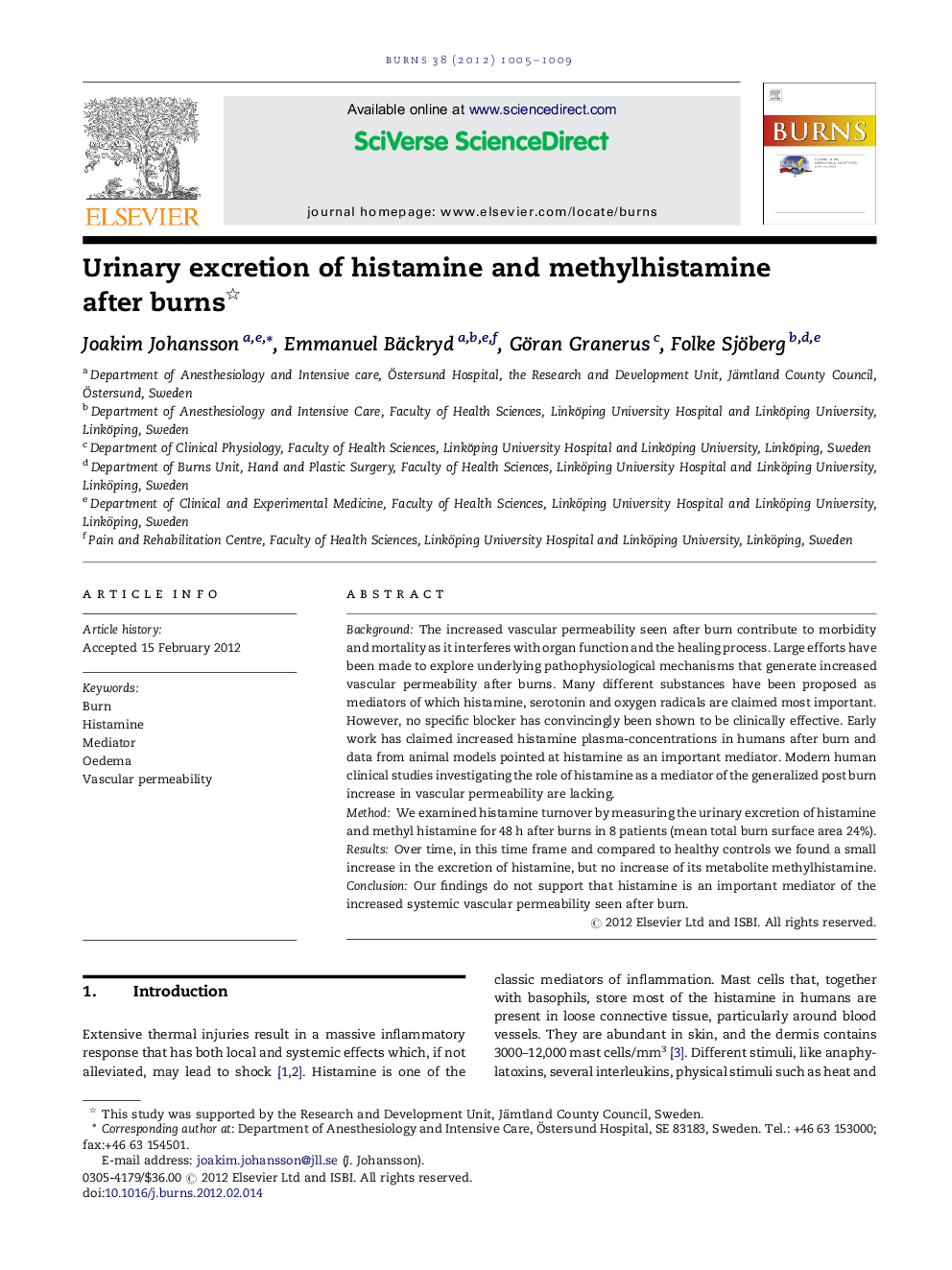| Article ID | Journal | Published Year | Pages | File Type |
|---|---|---|---|---|
| 3104762 | Burns | 2012 | 5 Pages |
BackgroundThe increased vascular permeability seen after burn contribute to morbidity and mortality as it interferes with organ function and the healing process. Large efforts have been made to explore underlying pathophysiological mechanisms that generate increased vascular permeability after burns. Many different substances have been proposed as mediators of which histamine, serotonin and oxygen radicals are claimed most important. However, no specific blocker has convincingly been shown to be clinically effective. Early work has claimed increased histamine plasma-concentrations in humans after burn and data from animal models pointed at histamine as an important mediator. Modern human clinical studies investigating the role of histamine as a mediator of the generalized post burn increase in vascular permeability are lacking.MethodWe examined histamine turnover by measuring the urinary excretion of histamine and methyl histamine for 48 h after burns in 8 patients (mean total burn surface area 24%).ResultsOver time, in this time frame and compared to healthy controls we found a small increase in the excretion of histamine, but no increase of its metabolite methylhistamine.ConclusionOur findings do not support that histamine is an important mediator of the increased systemic vascular permeability seen after burn.
